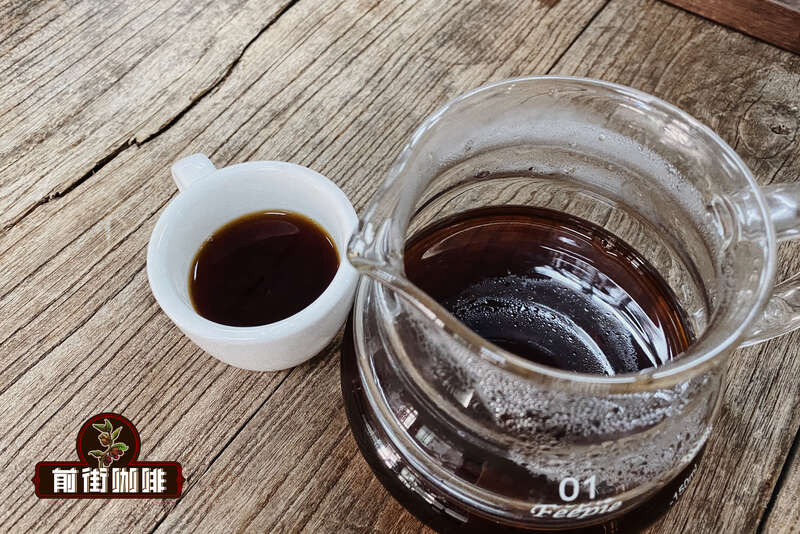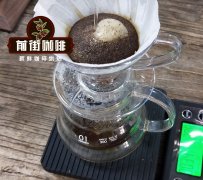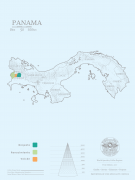What are the flavors and differences of the coffee producing areas of Obalaka, Gongma Agua and Paraso in Honduras?
Introduction to Obalaka Coffee
The Obalaca Golden Mountains Opalaca (Montana Dorada) covers the coffee producing areas in the southern part of Santa Barbara province, as well as Intibuca and Lempira. The name of the producing area comes from the Opalaca Mountains that span this area. Here has the unique climatic conditions, can cultivate the perfect balance of gourmet coffee.
In this vast area, there are five protected areas with a wide variety of flowers, and the Huangshan vein in Obalaka is located in this area, which is the origin of the coffee producing area. The high-altitude terrain is the best environment for growing coffee and is now the main source of income for the residents of this area.
■ altitude: 1100-1500 m
■ coffee varieties: Catuai, Tybica, Bourbon
■ production season: November to February
■ annual rainfall: 1350-1900 mm
■ average annual temperature: 19-21 degrees Celsius
■ coffee features: this area coffee has a delicate sour taste, pleasant aroma, and with the flavor of tropical fruits such as grapes and mulberries, with a sweet finish and soft beans.
Introduction of Gongma Agua Coffee
Comayagua is located in the center of Honduras and covers the provinces of Yoro and Comayagua. The city of Comayagua in the area used to be the capital of Honduras.
Mountainous terrain, fertile soil and hillside topography are the characteristics of the reserve. Most coffee is planted in the shade of trees, while shade trees are mostly Inca and Musa varieties.
The oldest clock in America can be found in Comayagua. The area is famous for its well-preserved monuments and colonial buildings and retains many churches and museums of great historical value.
Altitude: 1100-1500 m
Coffee varieties: Kaddura (Caturra), bourbon (Bourbon), Tybica (Tibica)
Production season: December to March
Annual rainfall: 1350-1700 mm
Average annual temperature: 14-22 degrees Celsius
Coffee features: the coffee in this area has obvious citrus flavor, sweet flavor of tropical fruit, and strong sour taste.
Introduction to Palaso Coffee
El Paraiso is the oldest and largest producing area in Honduras. Branch between El Paraiso, Francisco Morazan and Comayagua provinces.
El Paraiso is located at high altitudes, about every 1000 to 1400 meters, the local coffee beans belong to the SHG grade, the main coffee varieties are Kaddura (Caturra), Kaduai (Catuai).
Coffee cups are less sour than other Central American coffee beans and have a caramel flavor.
As the area is close to the adjacent area of the capital of Hongguo (Tegucigalpa de Gucigaba), full bright red coffee fruits can be seen when visiting nearby tourist areas during the production season.
Sea cut height: 1100-1400 m
Coffee varieties: Kaddura (Caturra), Kaduai (Catuai)
Production season: December to March
Annual rainfall: 950mm-1950 mm
Average annual temperature: 16-22 degrees Celsius
Coffee features: the coffee in this producing area has a balanced taste, mainly with a shallow sour taste and a pleasant finish.

Important Notice :
前街咖啡 FrontStreet Coffee has moved to new addredd:
FrontStreet Coffee Address: 315,Donghua East Road,GuangZhou
Tel:020 38364473
- Prev

An introduction to the Honduran acata coffee region The flavor characteristics of acata coffee
Agalta Tropical is located in the eastern part of Honduras and is the most widely distributed area. It consists of 14 protected areas. Ecotourism is a very important economic activity for local development, and tourists can walk in the tropical forest. There are also many protected areas in the region, which also create a variety of flowers and diverse forest forms. There are many wild animals passing through the area.
- Next

Panama coffee bean flavor introduction and geographical characteristics Panama coffee bean grade hsb What is it?
Panama Coffee The microclimate in Panama's coffee-growing areas varies with soil quality (Volkan's volcanic soil, for example, is quite abundant) and altitude (1,000 to 1650 m). Panama coffee is soft, light weight and balanced acidity, and its premium coffee beans are pure and rich in flavor.
Related
- Beginners will see the "Coffee pull flower" guide!
- What is the difference between ice blog purified milk and ordinary milk coffee?
- Why is the Philippines the largest producer of crops in Liberia?
- For coffee extraction, should the fine powder be retained?
- How does extracted espresso fill pressed powder? How much strength does it take to press the powder?
- How to make jasmine cold extract coffee? Is the jasmine + latte good?
- Will this little toy really make the coffee taste better? How does Lily Drip affect coffee extraction?
- Will the action of slapping the filter cup also affect coffee extraction?
- What's the difference between powder-to-water ratio and powder-to-liquid ratio?
- What is the Ethiopian local species? What does it have to do with Heirloom native species?

